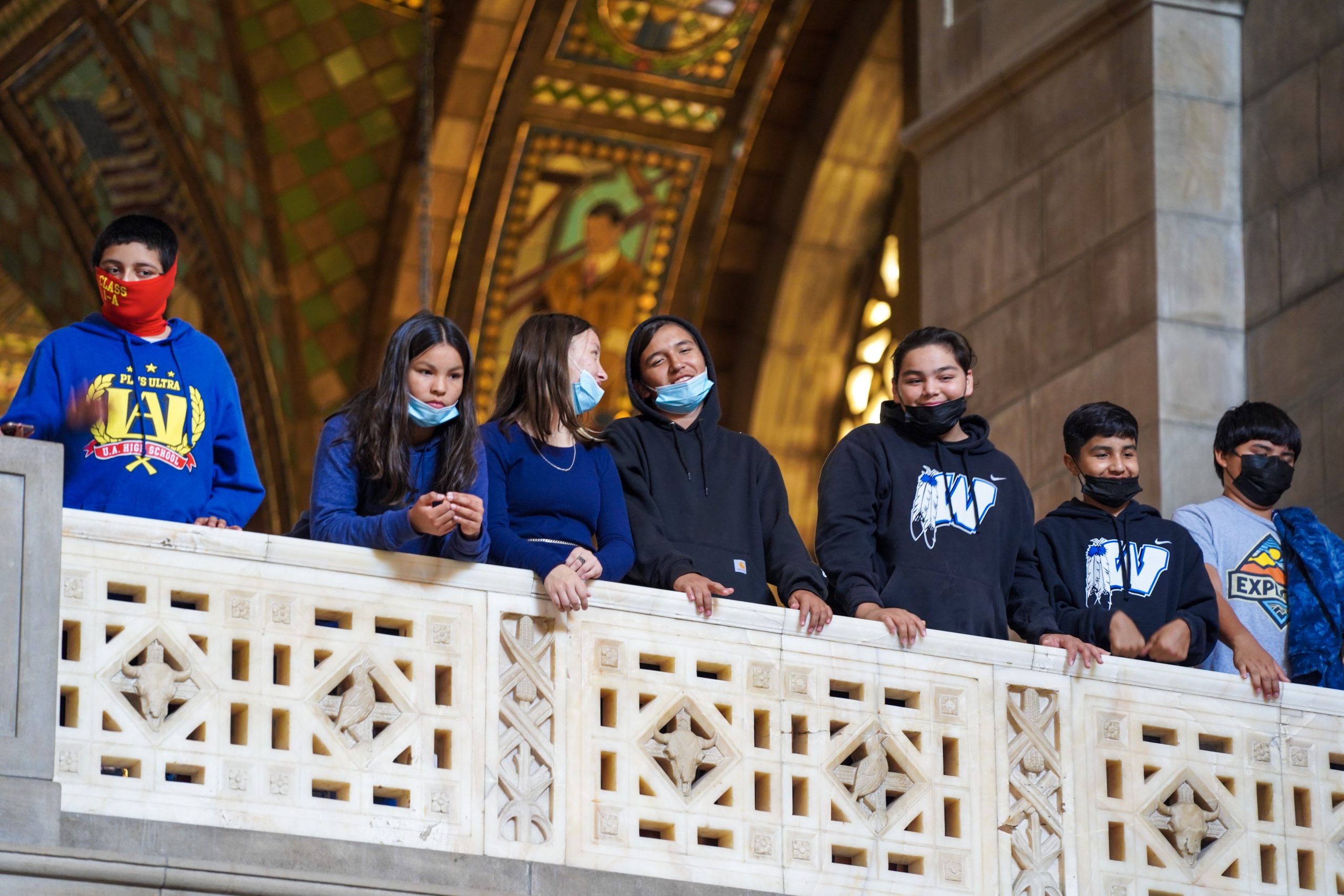Indianz.Com > News > Tribal community celebrates first Indigenous Peoples’ Day in Nebraska

‘Today is our day’
Tribal community celebrates first Indigenous Peoples’ Day in Nebraska
Tuesday, October 12, 2021
Indianz.Com
LINCOLN, Nebraska — Tribal leaders, state officials and descendants of America’s first indigenous doctor celebrated Nebraska’s first Indigenous Peoples’ Day on Monday with song, words and cultural presentations.
They gathered in the Capitol Rotunda, members of the state’s four federally recognized tribes – the Omaha, Santee, Winnebago and Ponca people. They sang at drums. They carried flags representing the four tribes, flags that will remain permanently in the state Capitol following legislation passed in 2020.





Indigenous Peoples’ Day in Nebraska







Search
Filed Under
Tags
More Headlines
AUDIO: American Indian and Alaska Native Public Witness Hearing Day 2, Afternoon Session
AUDIO: American Indian and Alaska Native Public Witness Hearing Day 2, Morning Session
Native America Calling: The game is changing for student athletes
AUDIO: Federal Indian Trust Asset Management: Progress Made But Improvement Needed
AUDIO: American Indian and Alaska Native Public Witness Hearing Day 1, Afternoon Session
AUDIO: American Indian and Alaska Native Public Witness Hearing Day 1, Morning Session
Native America Calling: Native people left out of progress on overdose deaths
Native America Calling: Trump job cuts hit Native education and sacred sites
House Subcommittee on Indian and Insular Affairs meets for oversight hearing
NAFOA: Things You Need to Know this Week (February 24, 2025)
VIDEO: American Indian and Alaska Native Public Witness Hearing Day 3
VIDEO: American Indian and Alaska Native Public Witness Hearing Day 2, Afternoon Session
VIDEO: American Indian and Alaska Native Public Witness Hearing Day 2, Morning Session
VIDEO: American Indian and Alaska Native Public Witness Hearing Day 1, Afternoon Session
VIDEO: American Indian and Alaska Native Public Witness Hearing Day 1, Morning Session
More Headlines
AUDIO: American Indian and Alaska Native Public Witness Hearing Day 2, Morning Session
Native America Calling: The game is changing for student athletes
AUDIO: Federal Indian Trust Asset Management: Progress Made But Improvement Needed
AUDIO: American Indian and Alaska Native Public Witness Hearing Day 1, Afternoon Session
AUDIO: American Indian and Alaska Native Public Witness Hearing Day 1, Morning Session
Native America Calling: Native people left out of progress on overdose deaths
Native America Calling: Trump job cuts hit Native education and sacred sites
House Subcommittee on Indian and Insular Affairs meets for oversight hearing
NAFOA: Things You Need to Know this Week (February 24, 2025)
VIDEO: American Indian and Alaska Native Public Witness Hearing Day 3
VIDEO: American Indian and Alaska Native Public Witness Hearing Day 2, Afternoon Session
VIDEO: American Indian and Alaska Native Public Witness Hearing Day 2, Morning Session
VIDEO: American Indian and Alaska Native Public Witness Hearing Day 1, Afternoon Session
VIDEO: American Indian and Alaska Native Public Witness Hearing Day 1, Morning Session
More Headlines